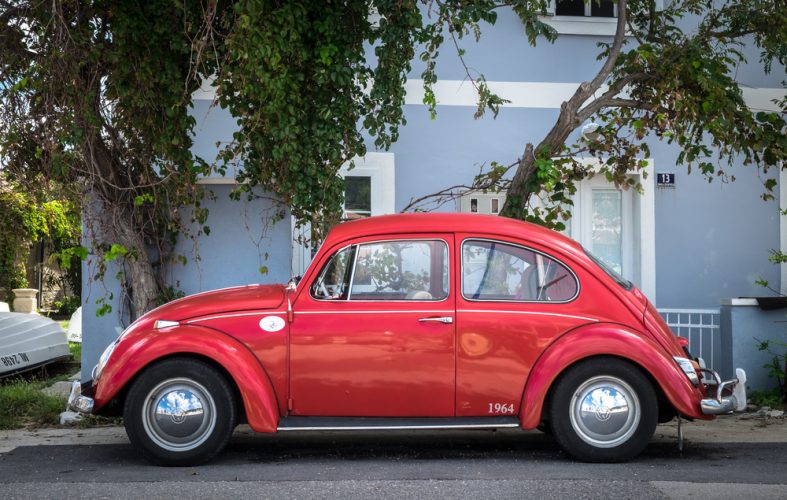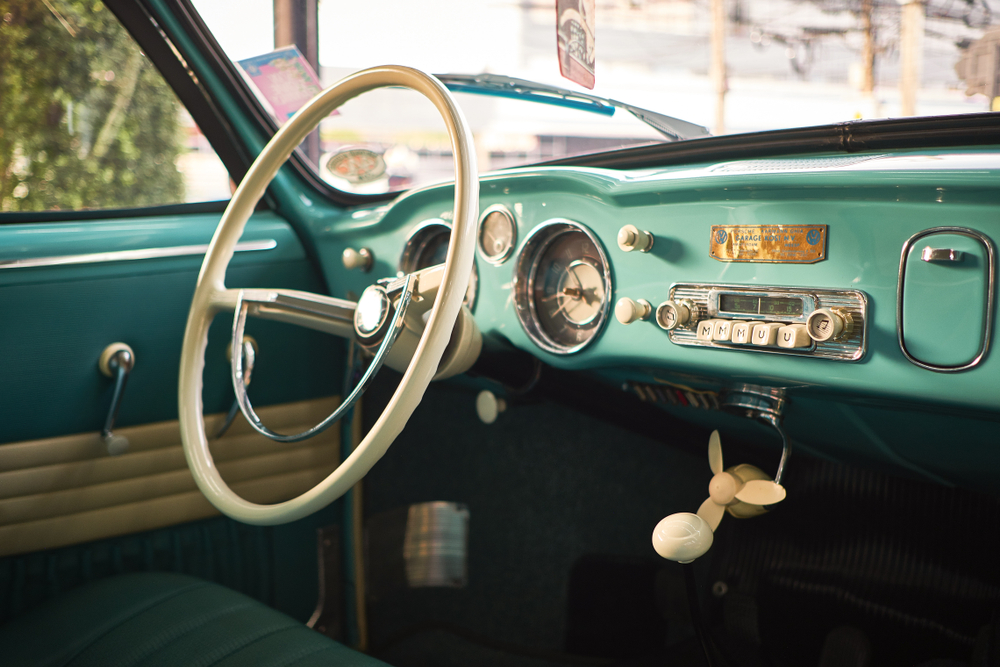
When you’re younger, “newer” always seems better. As you get a bit older, though, you start to miss the way things used to be.
This is certainly the case when it comes to the vehicle you drive. New vehicles come with many bells and whistles, including fancy touchscreens, built-in GPS, and much more. However, classic cars have many characteristics that we miss more every day. Each of the following, best protected with proper classic car insurance, will bring a smile to your face and a delightful sense of nostalgia.
What are these special features of oldies but goldies that you just don’t see anymore? Keep reading to discover the answer!
1. Built-In Phones
If you show members of Generation Z a vehicle with a built-in phone, they may think you are pulling their leg. After all, modern automobiles have no need for a built-in phone because everyone has a cell phone strapped to the hip at all times.
Another thing younger drivers may not appreciate about this feature in older models is what a status symbol it was. In the days before cell phones, making calls on the go was quite the privilege!
2. Crank Windows
Not all classic c features are ones that need to make a comeback. For example, many of us grew up with hand-crank windows that required good old-fashioned elbow grease to crank up and crank down.
In today’s vehicles, those old crank windows have been replaced with modern power windows. These are much more convenient, especially if you want to let a rear window down and you’re the only one in the vehicle. Of course, if you have a vehicle with crank windows, it may be a classic, and you’ll want to be sure you are insuring it properly, whether that is through your company or via a separate carrier.

3. Hood Ornaments
One thing most people can agree on is that classic automobiles had an abundance of style, and one of the greatest examples of this is the humble hood ornament.
Back in the day, hood ornaments were a pretty standard feature throughout the automotive industry. That’s because manufacturers realized that a good hood ornament could be downright sexy. Such ornaments were basically little statues on the hood, and we think they make any older vehicle of yesteryear look as sleek as the luxury ones of today!
4. Cigarette Lighters
Every now and then, there are parts we are happy to say “good riddance” to. At the top of that list is the built-in cigarette lighter that used to be a popular option throughout the automobile industry.
Years ago, smoking was so commonplace that the cigarette lighter became standard. Eventually, though, more people became aware of the safety concerns related to smoking as well as the dangers of distracted driving. If nothing else, kicking the habit helps the average driver save money on coverage from various health insurance companies. Because of that, automakers dropped cigarette lighters and were replaced them with things like USB ports (which means modern drivers don’t have to worry about getting rid of the smell of smoke).
5. Manual Locks
Whenever you get out of the vehicle, it’s a good idea to lock it right away. Of course, that used to take a lot more time. That’s because one of the old features that was completely universal was manual locking. However, automakers did come up with the idea of locking up once the days of the Model T had passed.
These days, most automobiles have automatic locks you can trigger as soon as you are outside the vehicle. Not only does this make it more convenient to lock or unlock your ride, but you can also trigger the alarm on a modern vehicle when you are having trouble finding its location.
6. Tailfins
Sadly, Batman is a fictional hero, and that means none of us gets to drive the Batmobile. However, the Batmobile made popular in the late 1960s via the Adam West television show stood out because of an original design that prominently featured tailfins.
Tailfins were a great idea for the old classics because they made the vehicle look so futuristic. Now, though, you only see these fins when you see certain vintage models on the road. With any luck, these owners are keeping the automobile protected when it’s parked outside.
7. Bench Seats Up Front
As you might imagine, many of the changes made to automobiles over the years included new safety features. These updates made it easier to do things like check your blind spot or activate your turn signals. Sometimes, though, making cars safer involved a major redesign.
For instance, bench seats were a common feature in the front of the vehicle (and in the old and nostalgic VW bus). But these seats put the person in the middle (often a child) in danger. That’s why, over time, bucket seats became the norm. It makes sense that having only one dedicated seat per person helps keep everyone safer (just like having enough insurance coverage).
8. The Cassette Player
When someone says “classic American cars,” every driver envisions something different. For example, some think fondly of the sleekness of the Chevrolet Camaro. Others imagine the quiet luxury of Mercedes-Benz. How about the Rolls Royce, which may people in the United States only saw in the movies.
No matter the make or model, though, all of these had one feature just as standard as seat belts and a license plate: the cassette player! These days, drivers tend to stream music or podcasts via Spotify or Sirius when they have a long way to drive. The drivers of yesterday, however, took special pleasure in loading up a mixtape, pressing a few buttons, and enjoying some killer tunes.
9. Wood Paneling
What do you remember about the ’70s and the ’80s? There were common features like manual transmissions and spare tires on the outside of the automobile. Aesthetically speaking, though, one of the most common was wood paneling.
This trend dates back to the 1950s, and eventually, it became commonplace to mix high-tech with natural wood paneling. This is why early video game systems like the Atari 2600 featured similar wood grain paneling: automakers from decades past had made this a trendy norm, but that norm has been lost to the mists of time.
10. Pop-Up Headlights
Sometimes, classic features we remember were born out of necessity. As an example, the government once had strict rules regarding the height of headlights. This led to the popularity of pop-up headlights, which, incidentally, made them look sleeker than ever.
Eventually, those government restrictions were relaxed, and pop-up headlights were deemed an unfortunate safety hazard. Thus, they became the kind of feature that we only see on classic vehicles.
What Features of Old Cars are Not Missed?
If you live in a hot climate, such as Arizona or Florida, you wouldn’t be so fond of these more mature rides when you realize they don’t have air conditioning! Of course, if you go really far back, they didn’t have windows or doors either, so maybe the hot air blowing on you sufficed. Also, people didn’t have AC in their homes, for the most part, so they left the door open a lot (or had the good idea of putting a block of ice in front of a fan!). Automakers did have the good idea to invent wing windows for cooling. These were called wing windows since they turned backwards, stuck out and directed a little fresh air to the inside.
Not-So-Modern Engines
Another good idea that came along in the modern era was modern engines. You probably would have found the older engine a more simpler beast, but modern engines are smaller, produce much less noise, are more powerful, and move fuel efficiency to the top of the list. Of course, back in the good old days of the 1920s, the top speed of a Model T was around 40-45 mph, so hang on to the steering wheel because that blew the old horse and buggy mode of transport right out of the water! Oh and don’t forget, you had to hand crank it to get it started! Today’s more modern jalopies have a handy ignition right on the steering column and a lot more engine power.
Wrist Twist and Dog Sacks
Another “great” idea that never caught on was Ford Motor Company’s introduction of the “Wrist Twist” steering system in 1965. Most people were driving without power steering (but building up muscles, right?). Ford put these experimental steering wheels on the Mercury Park Lane convertible, an expensive (and really heavy beast at 4,211 lbs.). The wrist twist system consisted of two smaller steering wheels, one for each hand. Luckily for a whole generation of drivers, the wrist twist system idea didn’t replace the traditional steering wheel we know today.
In the early days of this new-fangled invention, people were bringing their dogs with them, just like we do today. The dog sack was an idea in 1935 that, luckily for our canine friends, never made it out of the design phase. The idea was to hang a sack out of the rear window, attached to the window and the running board, that would carry your dog on the trip. Other riffs on the dog sack included a metal dog cage that attached to the running boards. The idea was to keep the inside of the car pristine and free from Rover’s sharp nails and slobber.
Automobiles were definitely a good idea, but the early ones wouldn’t do in today’s society.
Protect Your Classic Car with the Right Insurance
Now you know about the features of old cars you just don’t see anymore, but if you own a classic yourself, do you know who can help you protect it with affordable car insurance?
Here at Freeway Insurance, we offer classic car insurance across the nation that you need to protect your premium vehicle. Get your free quote now today or simply call us at 800-777-5620 for more information on how to protect your investment!



